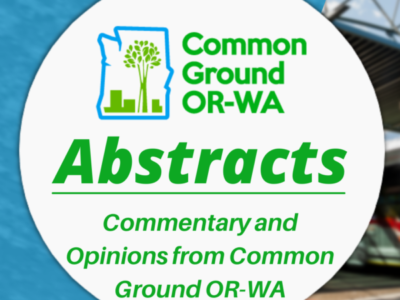Many homeowners are paying unfairly high taxes because local governments are failing to accurately assess property values. What can be done about this?…
How Lower-Income Americans Get Cheated on Property Taxes
Many homeowners are paying a total of billions of dollars extra because of inequities in assessing property values.
The New York Times
Opinion By The Editorial Board April 3, 2021
Excerpts:
“Americans expect to pay property taxes at the same rates as their neighbors. But across most of the United States, flat-rate property taxation is a sham.
Local governments are failing at the basic task of accurately assessing property values, and there is a clear and striking pattern: More expensive properties are undervalued, while less expensive properties are overvalued. The result is that wealthy homeowners get a big tax break, while less affluent homeowners are paying a higher price for the same public services.
Homeowners have long complained about inequitable assessments, and past studies have documented problems in particular cities. A new nationwide analysis led by Christopher Berry of the University of Chicago reveals that the inequities in tax assessments are both very large and very common.”
—
“These distortions in assessed values carry through directly to tax bills. Nationwide, from 2007 to 2016, homes in the bottom 10 percent of property values in a given county were taxed, on average, at an effective rate that was twice as high as the rate for homes in the top 10 percent of property values.”
—
“Inequitable assessment is also an important reason the burden of state and local taxation is regressive, meaning that most state and local governments collect a larger share of the income of lower-income households than of upper-income households. By failing to properly assess property, government is worsening the large and growing inequalities in the distribution of wealth and income.
The burden falls disproportionately on minorities. Because of the accumulated effects of past racism, minorities tend to live in homes that command lower prices — yet are assessed at inflated values.”
—
“Mr. Berry examined counties in each year from 2007 to 2016 in every state except California, which has a unique property tax system. In the average year, 90 percent of those counties failed to meet a basic industry standard for accuracy and equity.”
—
“In New York, where assessments are mostly performed by cities and towns, the state’s most recent review in 2019 concluded that 55 percent of jurisdictions did not meet the industry standard. But the standard is not enforced. Indeed, New York is one of a small handful of states that does not even require regular assessments.”
—
“In Delaware, where counties have not revalued properties since the 1980s, a state judge ruled last year that inequities had grown so large as to violate the state Constitution.”
—
CGORWA Note: The Washington Post reported that Sussex County Council on April 6 agreed to reassess property values for the first time in nearly half a century to settle a lawsuit over school funding and woefully outdated property assessments. A Delaware Chancery Court judge ruled last year that the county assessment schemes violated a constitutional requirement that properties be taxed uniformly, and a state law requiring that property be assessed at [fair market value].
—
“In 2017, Detroit systematically updated the values of properties for the first time in six decades, sharply reducing valuations across the board. But an independent review found that high-value homes got disproportionate reductions, deepening inequities.
One reason for these inequities is that assessors aren’t paying enough attention to the cardinal rule of real estate: location, location, location. The data show errors in valuation tend to cluster geographically. Underestimating the significance of location has the effect of discounting the value of properties in more desirable locations and overstating the value of those in less desirable locations.”
—
“Statistical techniques are readily available to account for variations [in location value] without inquiring into causes.
Daniel McMillen, a professor at the University of Illinois, Chicago, who has reviewed the recent studies, said that the geographical pattern of the errors indicates that many assessors simply aren’t trying very hard to deliver accurate numbers. Mr. Berry estimates that statistical best practices could reduce the inequities by roughly one-third.”
—
“Local governments also need to reconsider the process that allows homeowners to appeal assessments. That system is meant to rectify inequities, but it often widens them. In Nassau County, N.Y., for example, a Newsday investigation in 2017 found that appeals were routinely successful. Following a reassessment, fully 61 percent of property owners won reductions in assessed value. The problem is that those least likely to appeal were the owners of the low-priced properties most likely to be overvalued on the tax rolls.”
—
“The inequities that researchers have put on public display are galling not just because they have come at the expense of those who can least afford it, but because it’s clear that it would be relatively easy for local governments to address these problems.
Equitable assessment is possible. Anything less is unacceptable.”
Comments:
Does the problem of inequitable property taxation seem familiar? It should. California is not unique in its intentionally distorted property tax system; Oregon is plagued by Measure 50 assessment limitations that have been in effect since 1995. A recent study for Common Ground OR-WA conducted by the Northwest Economic Research Center revealed that taxable assessments, held to a limit of 3% growth annually over these 25 years, now amount to only 39% of real market value in Multnomah County. And yes, this distortion carries over into tax bills. Lower income communities such as located in Outer Southeast Portland pay disproportionately higher taxes than rapidly gentrifying communities.
It’s time to bring Oregon back into line with best practice assessment and eliminate these intentional false assessments. State Rep. Rob Nosse, District 42, has introduced HJR 13 in the 2021 legislative session. This is an important first step towards correcting these distortions through a constitutional amendment requiring the ratio of taxable assessed value to real market value to be fixed at 75 percent. Regrettably, some submitting testimony opposing the bill claimed the reset would raise taxes. In fact county-wide levy receipts would remain the same because tax rates would be adjusted downward to achieve revenue neutrality. Thanks to Rep. Nosse for launching a movement toward reestablishing real market values, even though it may take another session to pass the resolution.
We believe the next step should require the State Dept. of Revenue to adopt appraisal standards that must be applied by county assessors. Historically, U.S. assessors tended to undervalue land relative to improvements. In order to avoid taxpayer complaints and lawsuits, they sometimes simply lower land assessments. Yes, there are statistical techniques readily available to account for variations in location value. The current best practice is Computer Assisted Mass Appraisal. CAMA can value many properties at the same time, lowering administrative cost.
The final step towards true property tax reform in Oregon should be an amendment to the state constitution allowing local jurisdictions to adopt a Land Value Tax system based on true market values.
1 Comment
-
Mass assessments is what they use for “smoke and mirrors” to produce fraudulent assessments. They have expanded beyond what is done in Chicago, which was known as the worst offender in the country, under assessing the rich by 1/3 and over assessing the poor by 200%, in Vernon NJ.



